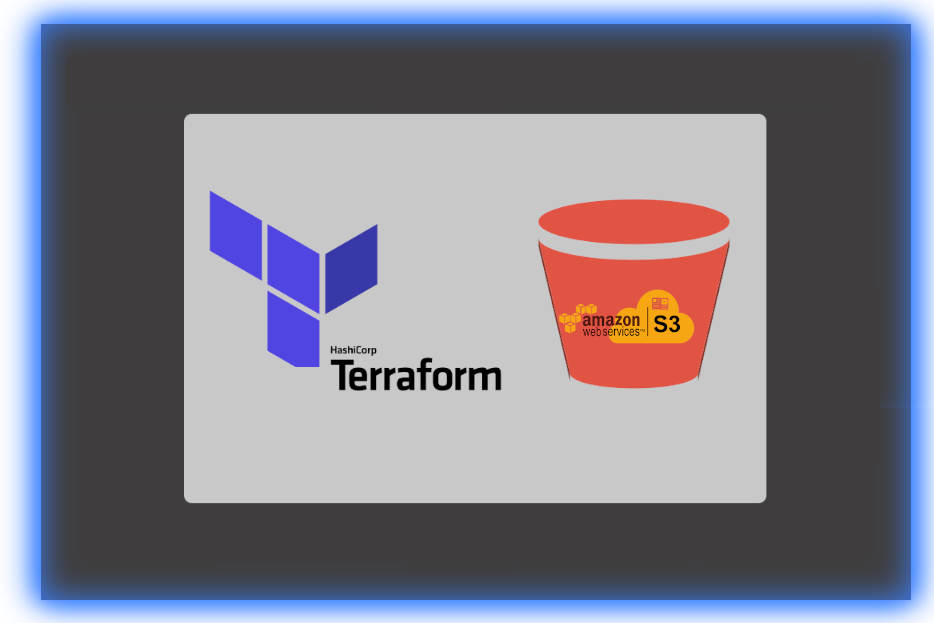Whether you are setting up a simple storage solution or a complex multi-service architecture, Terraform combined with AWS S3 provides a powerful framework for managing your resources.

Terraform, an Infrastructure as Code (IaC) tool, is renowned for its ability to automate and manage infrastructure efficiently. Paired with AWS S3, a highly scalable and durable cloud storage service, Terraform provides a robust solution creates S3 bucket on AWS.
ThreeS3resourcesareofferedbyTerraform:
The AWS S3 bucket has various features and functionalities, including support for versioning, replication, encryption, ACL(accesscontrollist), and bucket object policy.
Now, let's dive right in and get started with managing the AWS S3 bucket using Terraform.

Creating an S3 bucket using Terraform involves writing configuration files that define the desired state of the S3 bucket. This section will guide you through the process.
Step 1: Create the bucket.tf File
1.Use the following Terraform code snippet in a new Terraform file called main.tf:
provider "aws" { access_key = "${var.aws_access_key}" secret_key = "${var.aws_secret_key}" region = "${var.region}" } module "s3" { source = "" bucket_name = "your_bucket_name" } resource "aws_s3_bucket" "temps3" { bucket = "${var.bucket_name}" acl = "${var.acl_value}" }
Step 2: Create the variables.tf File
The variables.tf file contains the variable references you see in the bucket.tf file. Create a Terraform file with the following code:
variable "bucket_name" {} variable "acl_value" { default = "private" } variable "aws_access_key" { default = “” } variable "aws_secret_key" { default = “”< } variable "region" { default = "region" }
Step 3: Execute the Commands in Terraform
To execute commands in Terraform, you first must initialize it. You can then apply the changes to your environment to create the S3 bucket. Type the following commands in Terraform:
terraform init terraform apply
You use the same steps as above to create bucket instances. Follow these steps to create the bucket.tf file and variables.tf file and deploy S3 bucket instances.
Step 1: Create the bucket.tf File
The bucket.tf file stores the basic configurations for the S3 bucket instance. Use the following code in the bucket.tf file:
provider "aws" { access_key = "${var.aws_access_key}" secret_key = "${var.aws_secret_key}" region = "${var.region}" } module "s3" { source = "" bucket_name = "your_bucket_name" } resource "aws_s3_bucket" "temps3" { bucket = "${var.bucket_name}" acl = "${var.acl_value}" }
Step 2: Create the variables.tf File
The variables.tf file contains the variable references you see in the bucket.tf file. Create a Terraform file with the following code:
variable "bucket_name" {} variable "acl_value" { default = "private" } variable "aws_access_key" { default = “” } variable "aws_secret_key" { default = “” } variable "region" { default = "region" }
Step 3: Execute the Commands in Terraform
If you already have Terraform initialized from the previous section, then you do not need to execute it again. If not, you must initialize Terraform before applying environment changes. Type the following commands in Terraform, but exclude the first command if you already have Terraform initialized:
terraform init terraform apply
Amazon S3 is an excellent solution for data storage due to its durability, scalability, and cost-effectiveness. You can automate backups using AOMEI Cyber Backup, ensuring that data is consistently protected and easily recoverable.
🔰Automated Backups: Schedule backups to run automatically at specified intervals. 🔰Incremental and Differential Backups: Save time and storage space by backing up only changed data. 🔰Flexible Recovery Options: Restore data from any backup point with ease. 🔰Secure Storage: Archive backups to Amazon S3 for protecting sensitive data. 🔰User-Friendly Interface: Simplify the backup process with an intuitive, easy-to-use interface.
✍To begin using AOMEI Cyber Backup with Amazon S3, follow these steps:
1. Click Target Storage > Amazon S3 > Add Target to open the add target page. Enter your Amazon S3 credentials including username, keyword, and bucket name, then click Confirm. Ensure you have the necessary permissions set up in your AWS account.
2. Click Backup Task > Create New Task to starting archiving your important data to Amazon S3. Select File Backup (for example) and choose files or folders for backup.
3. Check Archiving backup versions to Amazon S3 and click Select to choose the added Amazon S3.
4. Schedule backup task to run daily/weekly/monthly, and select backup retention policies to delete old backups automatically.
5. Click "Start Backup" to begin the backup process. It will first create a backup locally or on the NAS and then upload the backup to Amazon S3. According to the 3-2-1 backup rule, this ensures that the security of critical data and business continuity.
Backing up data to Amazon S3 using AOMEI Cyber Backup is an efficient and reliable solution for businesses looking to protect their critical data.
By following the steps outlined in this guide, you can confidently deploy, manage, and scale your S3 buckets, ensuring your cloud infrastructure meets the needs of your organization effectively and securely.